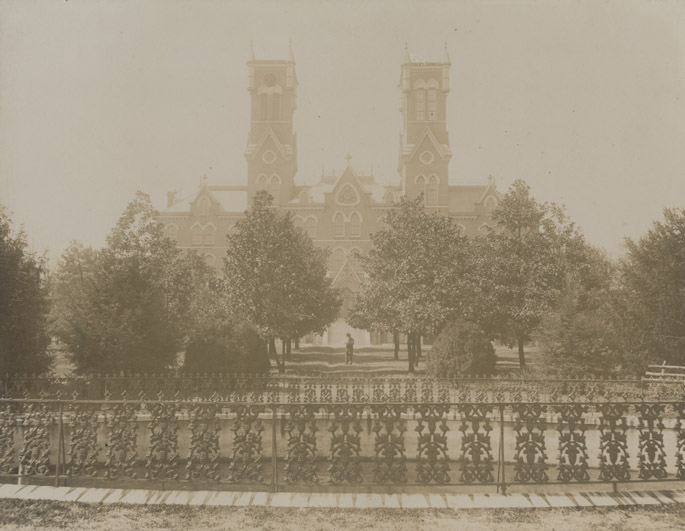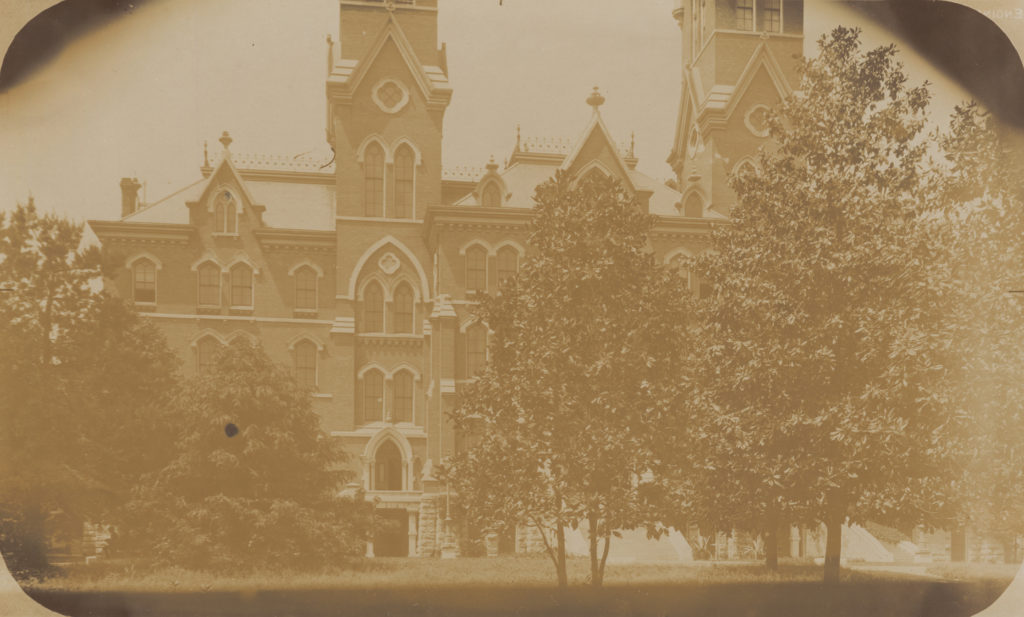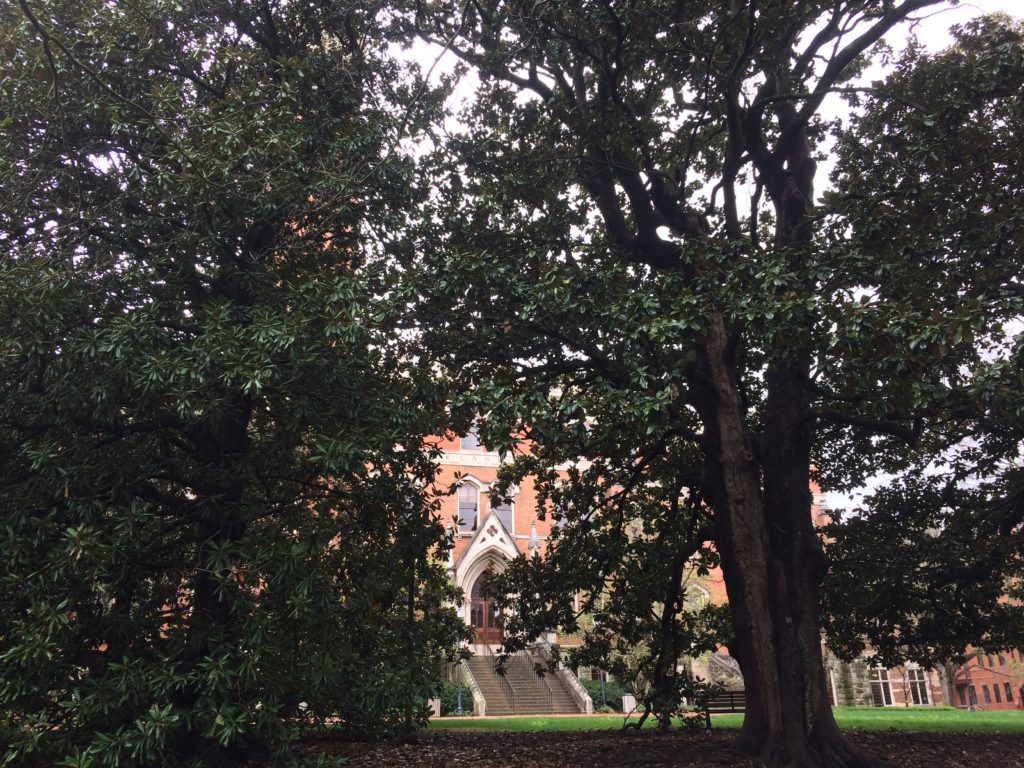History: Kirkland Hall magnolias

View of the front of Kirkland Hall sometime before 1897 showing the rows of small magnolias. Vanderbilt University Special Collections Photographic Archive image PA.BLD.KIRH.142
Originally, the site of Kirkland Hall did not have many trees. However, soon after it was built, many trees were planted around the building. These plantings included a formal planting of several rows of magnolias that can be seen in the photo above.
The following two pictures show a closer view one of these magnolias (2-1036).

View of the front of Kirkland Hall in the 1890s showing small magnolia 2-1036 on the right. Vanderbilt University Special Collections and University Archives photo archive image PA.CAF.SCEN.014

View of the front of Kirkland Hall in 2020 taken from the same location as the 1890s photo. Magnolia 2-1036 can be seen as a large tree on the right. Photo by Steve Baskauf under a CC0 license.
From these photos, you can see how much the tree has grown in over 120 years! For a detailed analysis of the old trees surrounding Kirkland Hall, see this blog post.
Kirkland Hall is the iconic symbol of Vanderbilt University – its tall and identifiable presence graces the covers of university publications, football tickets, and many picture frames throughout campus. It stood as the central building on a 74-acre campus when dedicated in October, 1875, and initially housed all the university’s classrooms and laboratories in addition to a chapel, a museum and the library. It was one of only 10 buildings in the original construction program on campus. Originally known simply as the “main building,” it was designed by Nashville architect William C. Smith. The building has been known by many names – Main Building, Old Main, University Hall and College Hall – before it was renamed Kirkland Hall in 1937 in honor of Vanderbilt’s second chancellor, James Hampton Kirkland, and his wife, Mary Henderson Kirkland. Chancellor Kirkland presided over Vanderbilt for 44 years. Both the man and the building remain central to Vanderbilt’s history.
Return to the historical tree tour page for magnolia 2-1036.
